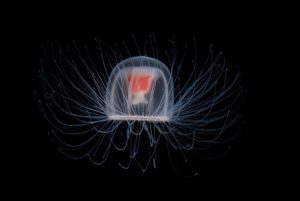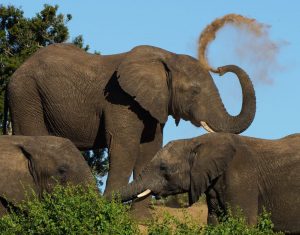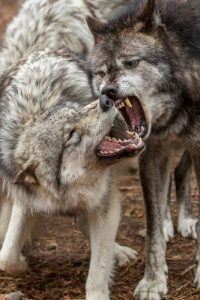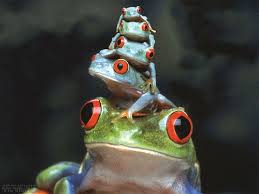Month: November 2016
Pelomedusa subrufa
The next species that I have decided to write about is a amphibian that most people would recognize. This species has the binomial nomenclature Pelomedusa subrufa. It has the common name african helmeted turtle. It is a species of turtle that is omnivorous. The length of the shell is about 15cm. The turtle is brown colored. The animal is vertebrate so it has a backbone. The animal is triploblastic and is a coelomate so it has a coelomic space. The turtle has a shell which is used to protect it from predators. This turtle species also produces an unpleasant odor that makes it undesirable for consumption by predators. There is some sexual dimorphism with the female having a broad shell and short tail while the male has a longer tail and a narrower shell. They are semi aquatic creatures and are present in most of Africa. The habitat tends to be muddy areas or creeks. During the dry season they will burrow into the bottom of mud pools and remain dormant until the next rainy season. Since they are omnivores they eat both plants and animals including other turtles. Their main diet is meat from small crustaceans, fish, earthworms, and snails. In large groups some may hunt as a pack to bring down larger prey like birds or other reptiles. They tend to be aggressive when eating and will drown their prey before eating it in the water. During mating season males will follow females and extend their head onto their back to try and initiate mating. If this does not work they will bite the back legs of the female until they are able to mate. Females will lay about 14 eggs which are covered in slime and placed in a nest to hatch.

References
Compton, C. (2014, June 21). 10 bizarre turtle species. Retrieved November 28, 2016, from http://listverse.com/2013/09/17/10-bizarre-turtle-species/
Javaid, K. (2009, August). African helmeted turtle. Retrieved November 28, 2016, from http://explore-biology.blogspot.com/2009/08/african-helmeted-turtle.html
Turritopsis dohrnii
The next animal that I have decided to write about is one that has gotten around something that most people fear and worry about often. This is a jellyfish with the scientific nomenclature Turritopsis dohrnii. This species has found a way to avoid death and is biologically immortal. At least in a sense this is true. When the jellyfish is an adult and comes under extreme stress such as an injury it will transform into an earlier stage that releases multiple copies of the same genetically identical jellyfish as juveniles. Since it is not going through its normal channel fo sexual reproduction which would include making gametes and fertilizing an egg, it can be said that the same individual is reverting to an earlier stage of its life cycle to live again. The life cycle of jellyfish involves multiple stages. The first stage is a fertilized egg that hatches into a planula that is free swimming for dispersal. The planula will then find a place to attach and become a polyp. The polyp will go through a process known as strobilation which will produce several genetically identical copies of itself as juvenile jellyfish that will then grow to be adult jellyfish once they are producing gametes. So in a way it can be said that it is immortal, but an argument can be made that it is going through asexual reproduction in a way. Jellyfish are invertebrates meaning that they have no bone structure but move by jet propulsion out of their mouth. Jellyfish also have stinging cells called cnidae which is why jellyfish are considered poisonous since the cell contains a toxin. This particular jellyfish is about 4.5mm or 0.18in across. It also has up to 90 tentacles. The jellyfish only has one opening to the digestive system. The organism is distributed around the world’s oceans. To eat the organism will stun prey with the cnidae on its tentacles and then bring the food to its mouth where it will be digested and any undigested prey will either be digested intracellularly or excreted out the mouth.

References
AMNH. (2015, May 4). The immortal jellyfish. Retrieved November 15, 2016, from http://www.amnh.org/explore/news-blogs/on-exhibit-posts/the-immortal-jellyfish/
Murai, T. (n.d.). [Turritopsis dohrnii, the so-called “immortal jellyfish,” can hit the reset button and revert to an earlier developmental stage if it is injured or otherwise threatened.]. Retrieved November 15, 2016, from http://www.amnh.org/explore/news-blogs/on-exhibit-posts/the-immortal-jellyfish/
Loxodonta africana
The next animal that I have decided to write about is the largest land mammal on Earth with the scientific nomenclature Loxodonta africana. This animal is the African elephant. The African elephant can grow to be about 8 to 13 feet tall. The elephant can also weigh between 2.5 to 7 tons. Since it is so large it is also a prodigious eater consuming about 300 pounds of food a day. The elephant has a rather unique limb called the trunk which is actually a long nose used for drinking, grabbing, and moving. The elephant also has tusks that are used to dig, find food, and fight at least in males. they are herbivores and so eat vegetation including the wild grasses that are so present in the African savannah. The females of the species live together in herds that can consist of as much as 100 elephants. The largest and oldest female is usually the leader called the matriarch. The males of the species tend to be more solitary. The animals go through sexual reproduction with internal fertilization. The gestation period is the longest of the mammals at about 22 months or two years. The babies are called a calf and weigh about 200 pounds and are about 3 feet in height when they are finally born. The herd cares for the young and protects them. Elephants are known to be extremely intelligent with many emotions. They also have a long memory over years that they use to remember routes to watering holes as they go nomadically around the savannah. Since they live in such a hot environment it is not unusual to see elephants “showering” by blasting themselves with water through their trunks. Afterward, they usually put dirt on their skin in order to protect it. There is also evidence that the elephant can communicate over long distances by creating a sub-sonic rumble that other elephants can feel in their skin. Elephants are close to being endangered since they have been hunted for their tusks which contain ivory used in many man-made products. Without the protections that are in place now banning the hunting of elephants for their tusks they would certainly be endangered and maybe instead of being almost endangered they would be almost extinct.

References
Defenders of Wildlife. (2016, September 19). Basic facts about elephants. Retrieved November 14, 2016, from http://www.defenders.org/elephant/basic-facts
National Geographic. (2016, November 02). African elephant national geographic. Retrieved November 14, 2016, from http://www.nationalgeographic.com/animals/mammals/a/african-elephant/
Sommer, J. (2012, November 25). Sand shower [Two young elephants playing while another sprays sand onto its skin.]. Retrieved November 14, 2016, from http://yourshot.nationalgeographic.com/photos/4178436/
Canis lupus
The next animal that I have decided to write about is a large predator that is probably familiar to most people with the scientific name Canis lupus. The animal that I am referring to is the gray wolf. Wolves are predators that had been hunted to near extinction at least in the wild around the 1930s. These animals as much as a nuisance they are on some human lives by eating domestic animals have many positive effects of their predation so that they were reinstituted into environments including Yellowstone national park. Wolves grow to be about 50 to 80 inches in length and about 40 to 175 pounds. Wolves also have a range of colors from brown to gray to black. They tend to be a little larger than the average dog. Wolves are social animals and tend to be a part of a pack with about 6-8 members. Wolves are also territorial and tend to define that territory through group howling. Packs tend to be very structured with a male and female alpha that control where the pack makes a den and hunting patterns. Howling is used within a pack to tell other members where they are in relation to the pack or to tell other wolf packs where the wolves territory is. Each wolf has a unique howl like a human fingerprint in order to tell individuals apart. Wolves are mammals so they can regulate their own temperature. Wolves also reproduce through sexual reproduction with internal fertilization. oftentimes it is only the alphas who will mate and reproduce. The entire pack will care for the baby wolves who are born sightless and defenseless. The pack will watch over them and bring them food until they are able to hunt for themselves. The gestation period for wolves is about 63 days with a litter size of 4-7 pups. Mating season is late January to March. Wolves prefer to hunt elk, deer, and other large hoofed animals, in so doing they keep those populations down which has many beneficial effects for other animals and many plants. These effects can range from keeping species from being eaten or providing food for other animals species.

References
Banfield, D. (2014, March 29). I’m the boss [A pack leader showing who is in charge]. Retrieved November 14, 2016, from http://yourshot.nationalgeographic.com/photos/3313851/
Defenders of Wildlife. (2016, September 19). Basic facts about gray wolves. Retrieved November 14, 2016, from http://www.defenders.org/gray-wolf/basic-facts
National Geographic. (2016, November 09). Gray wolf national geographic. Retrieved November 14, 2016, from http://www.nationalgeographic.com/animals/mammals/g/gray-wolf/
